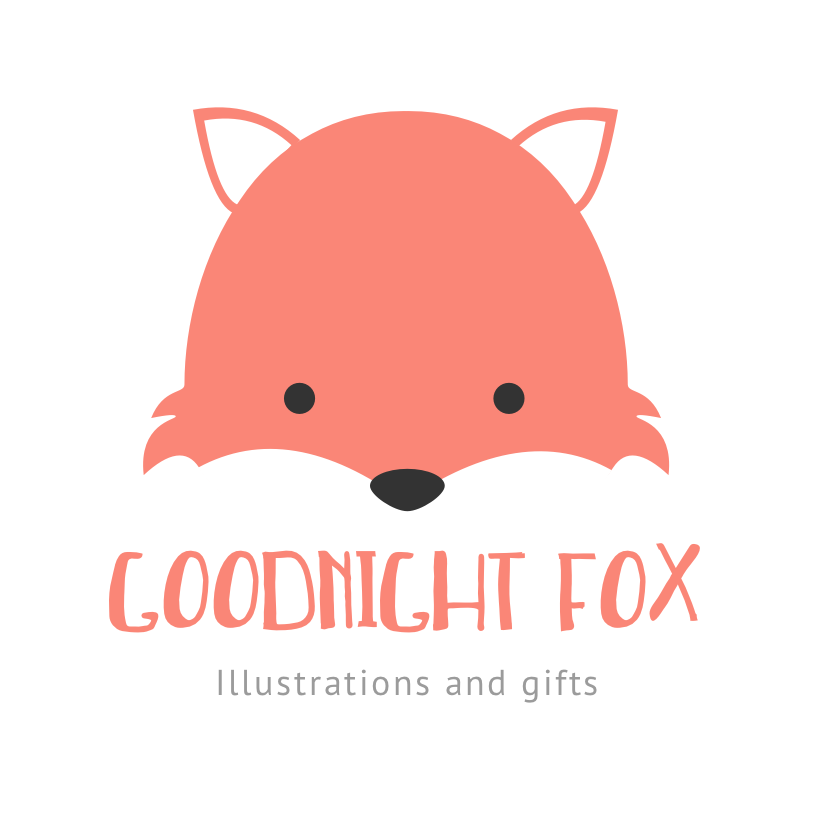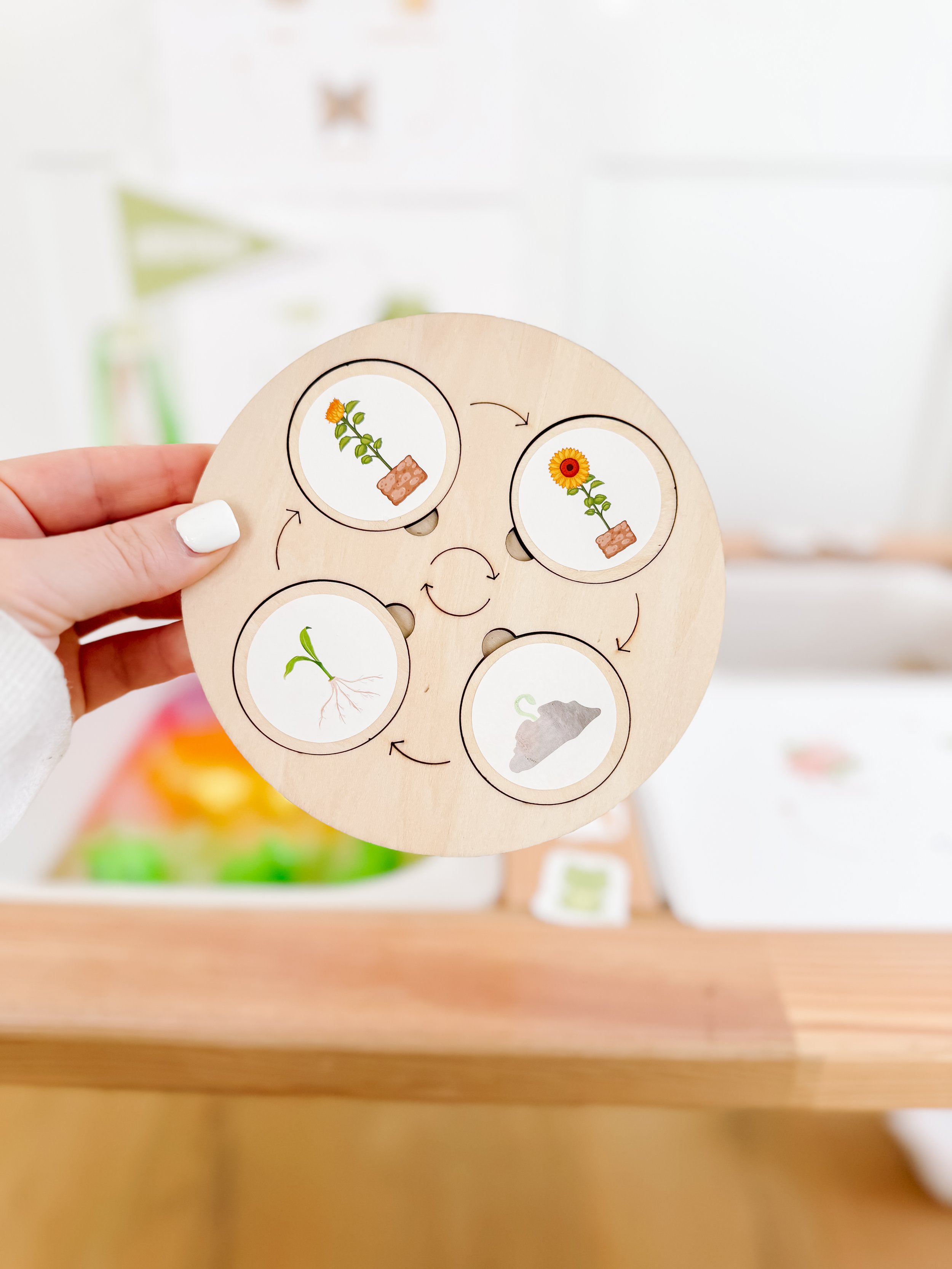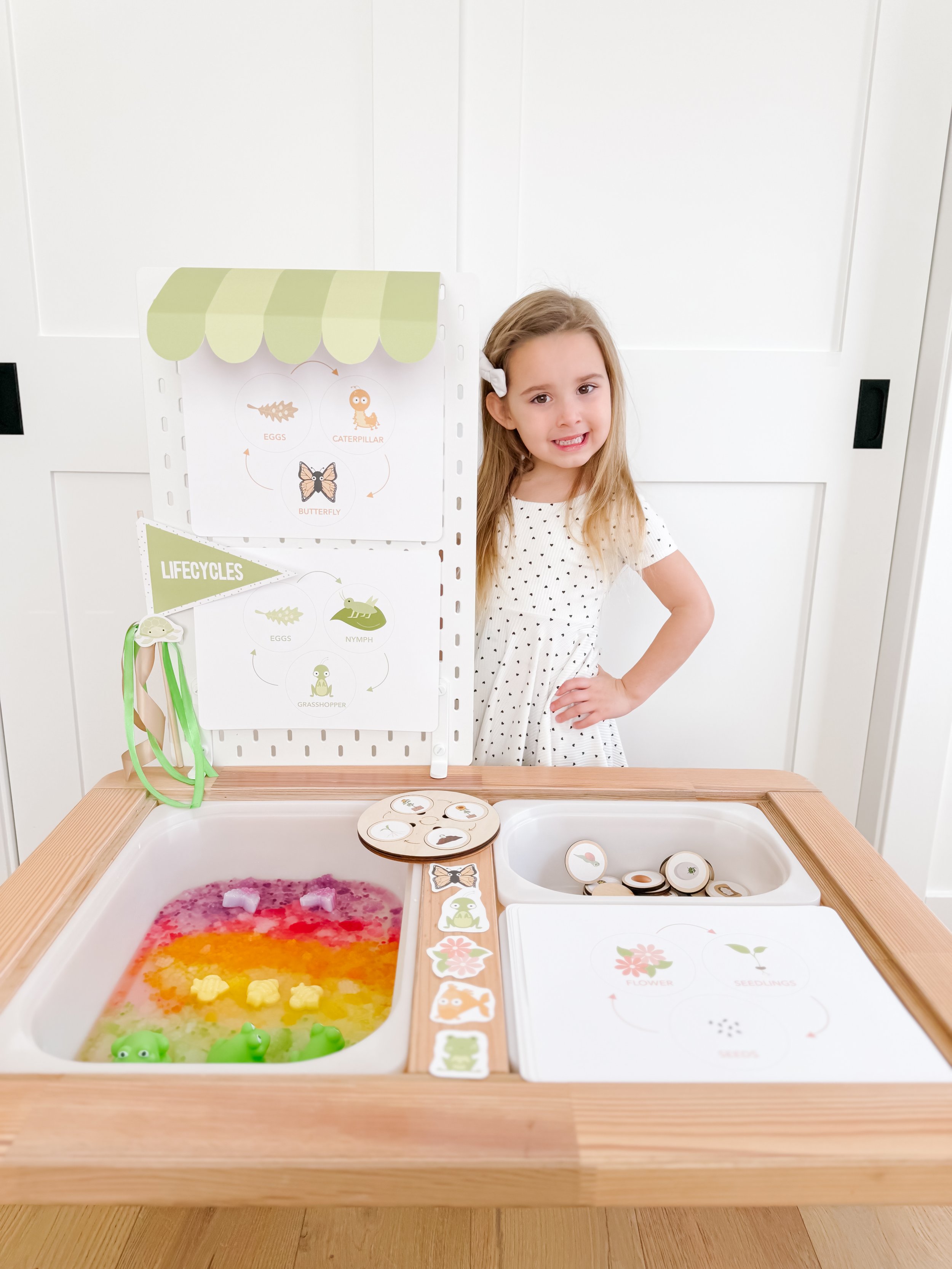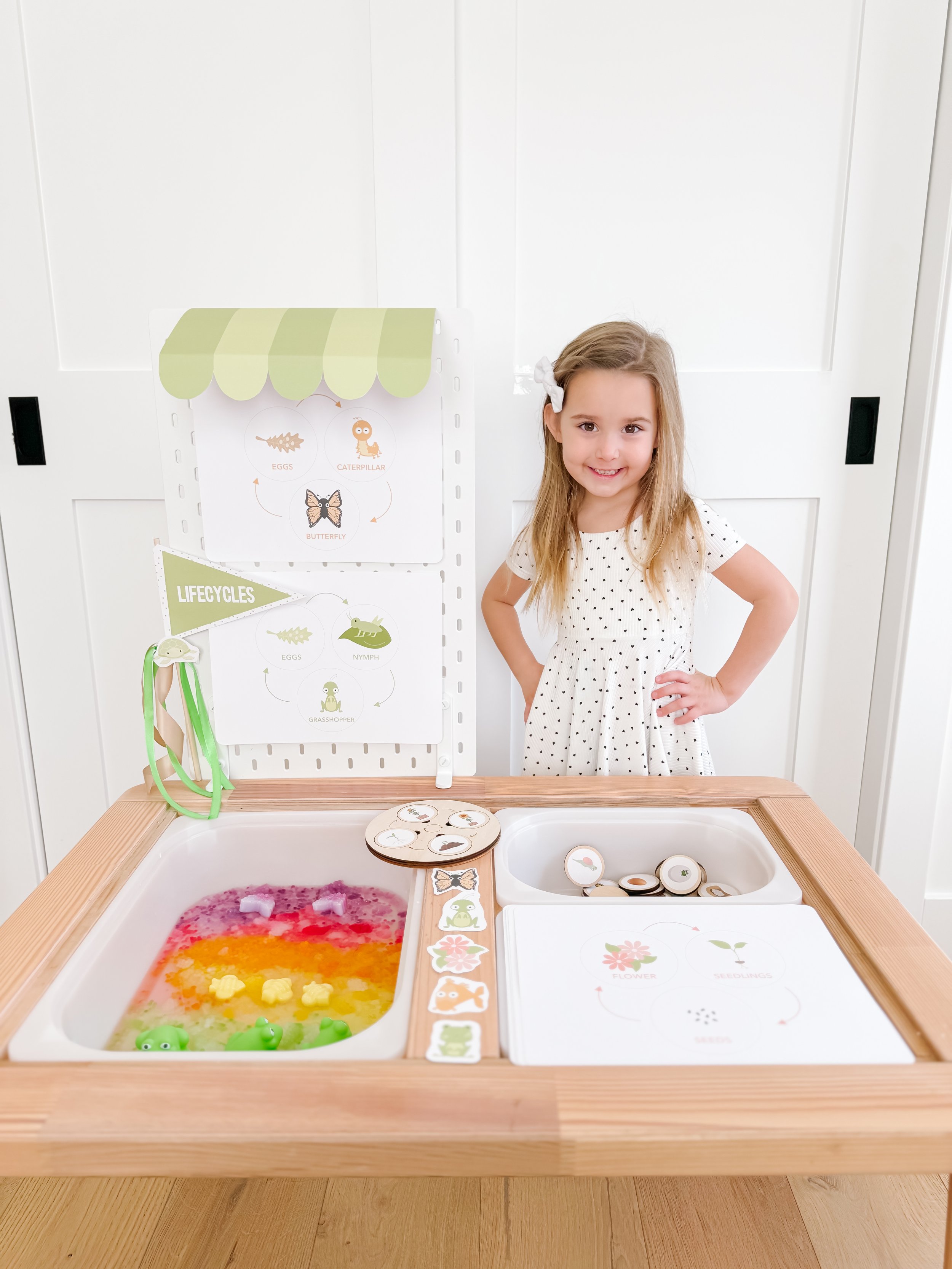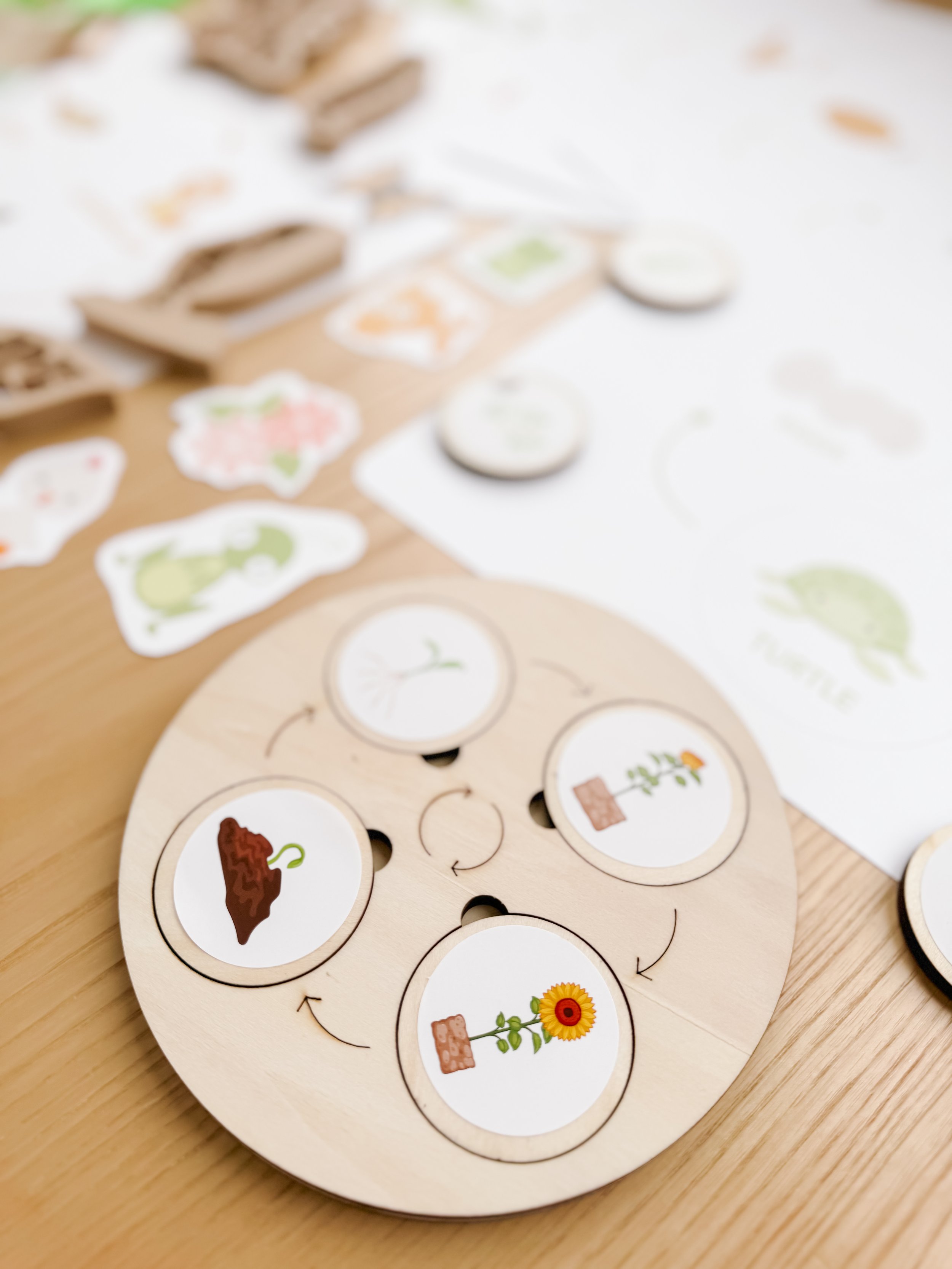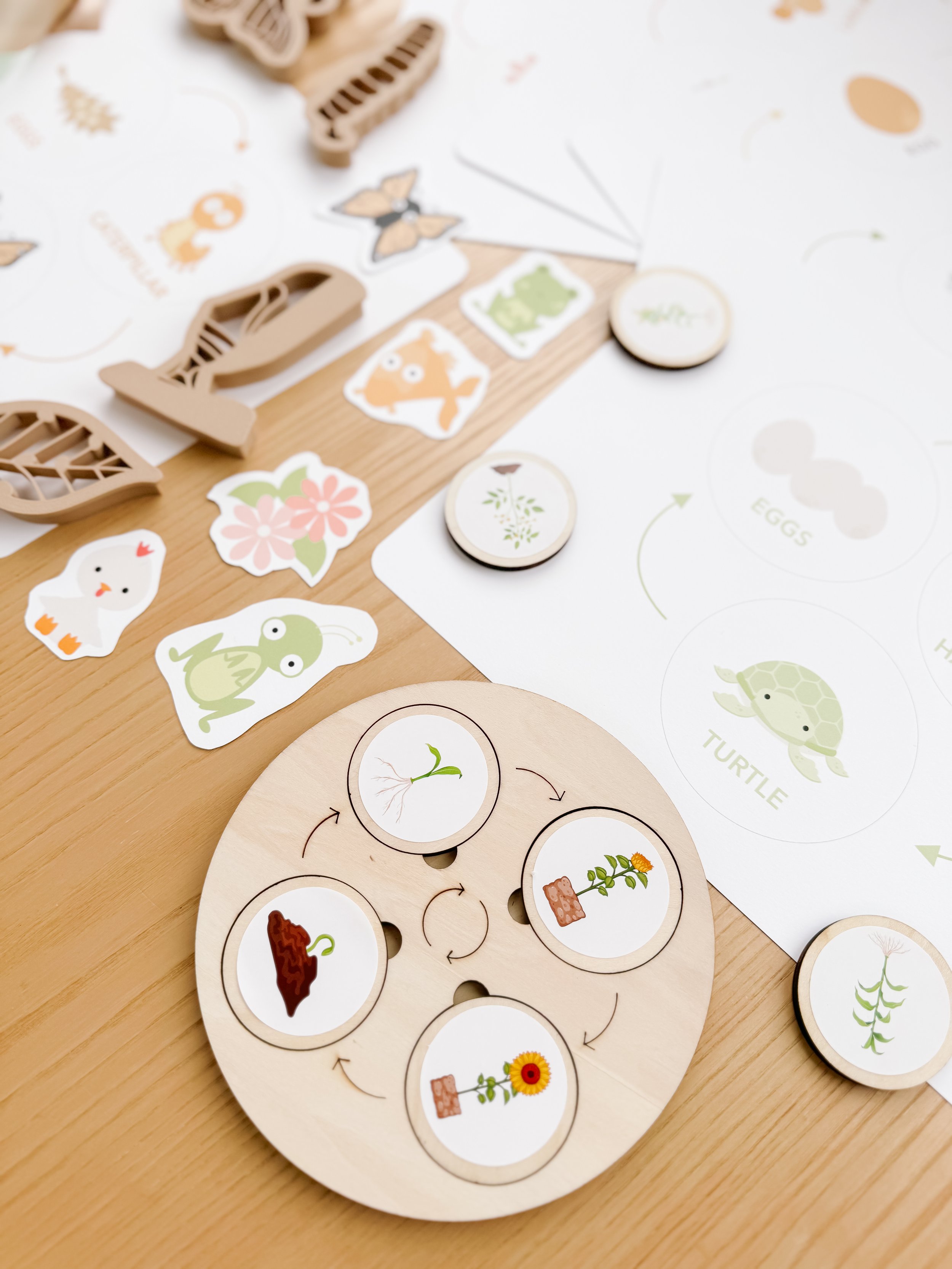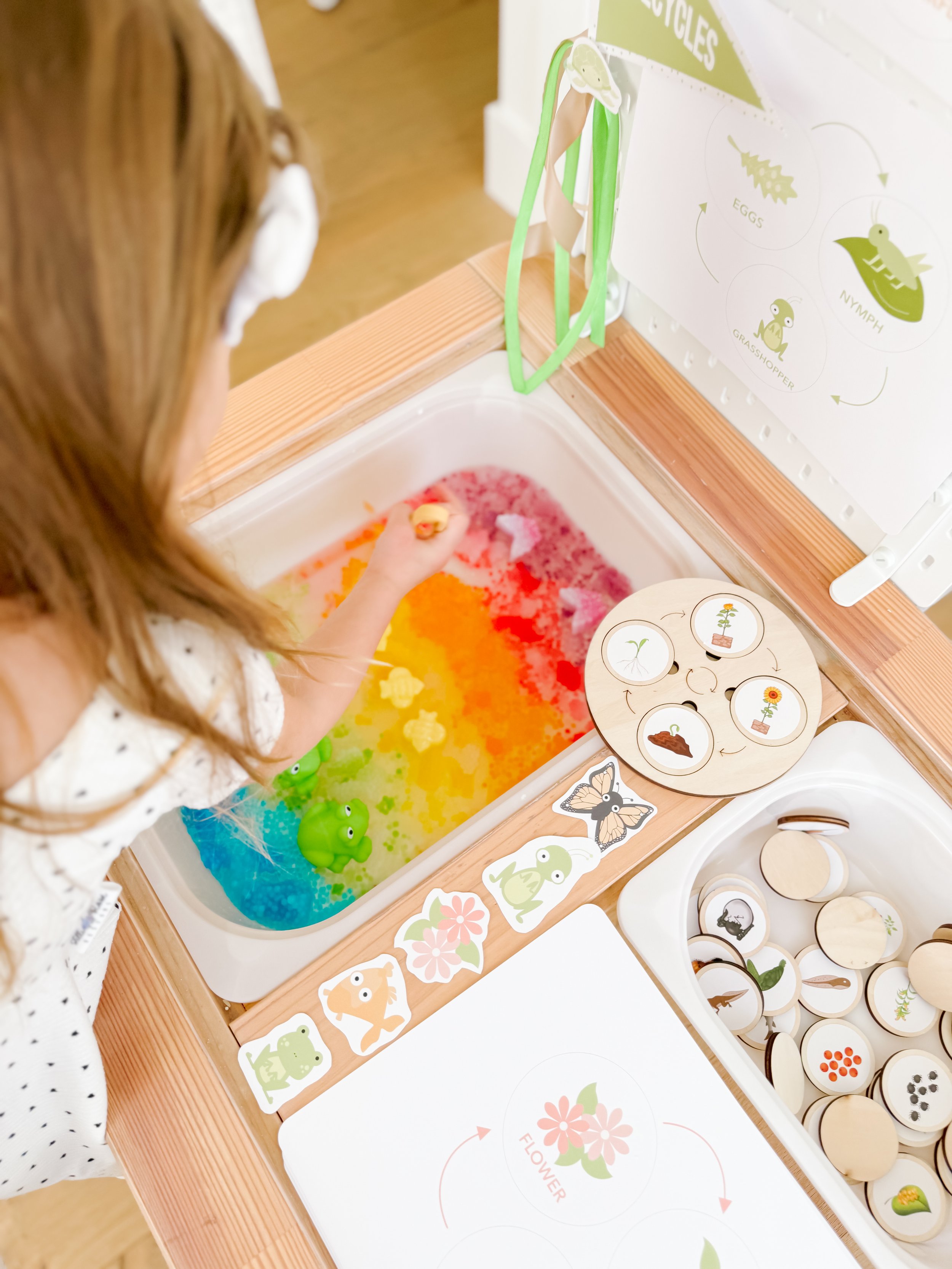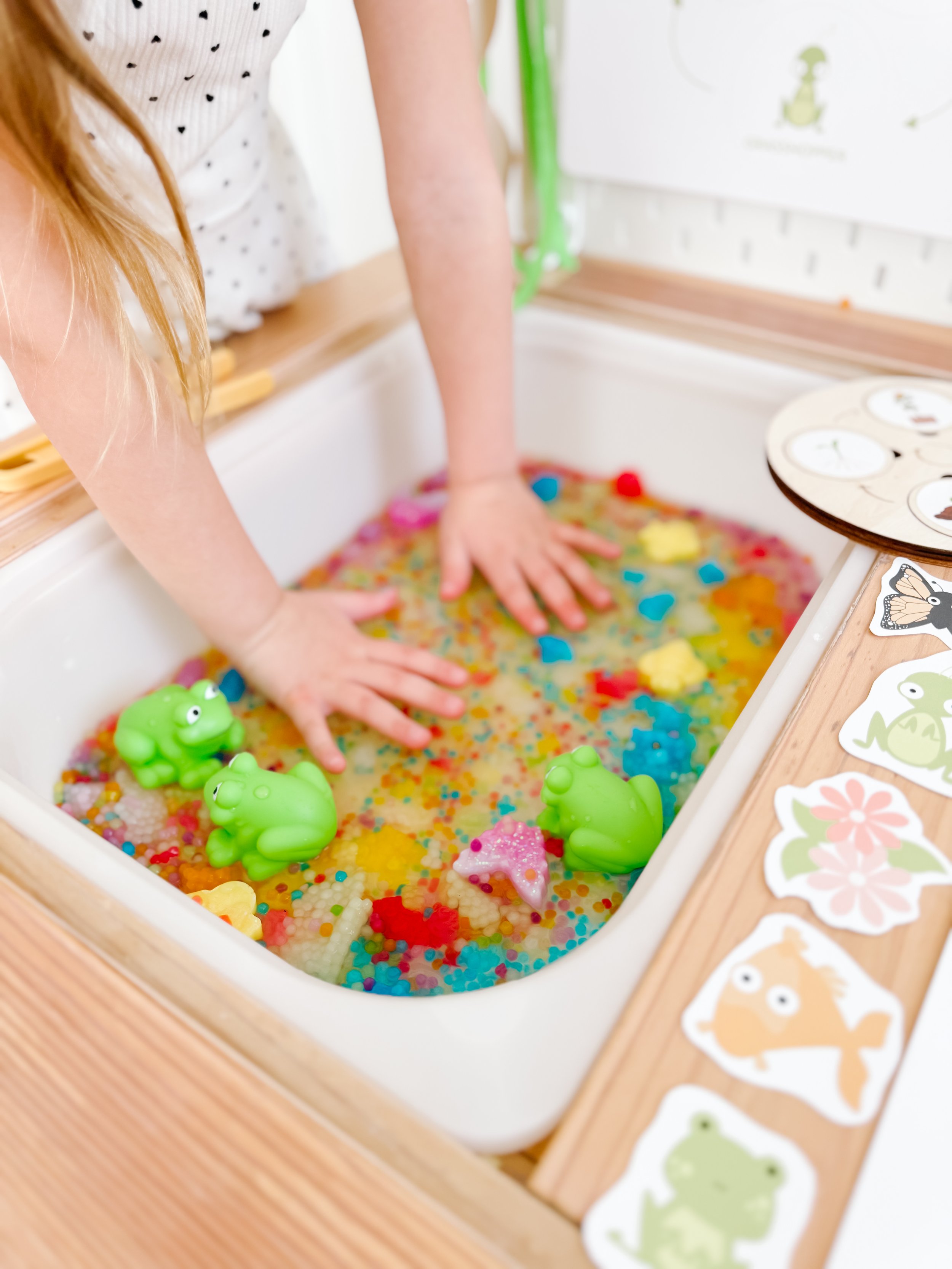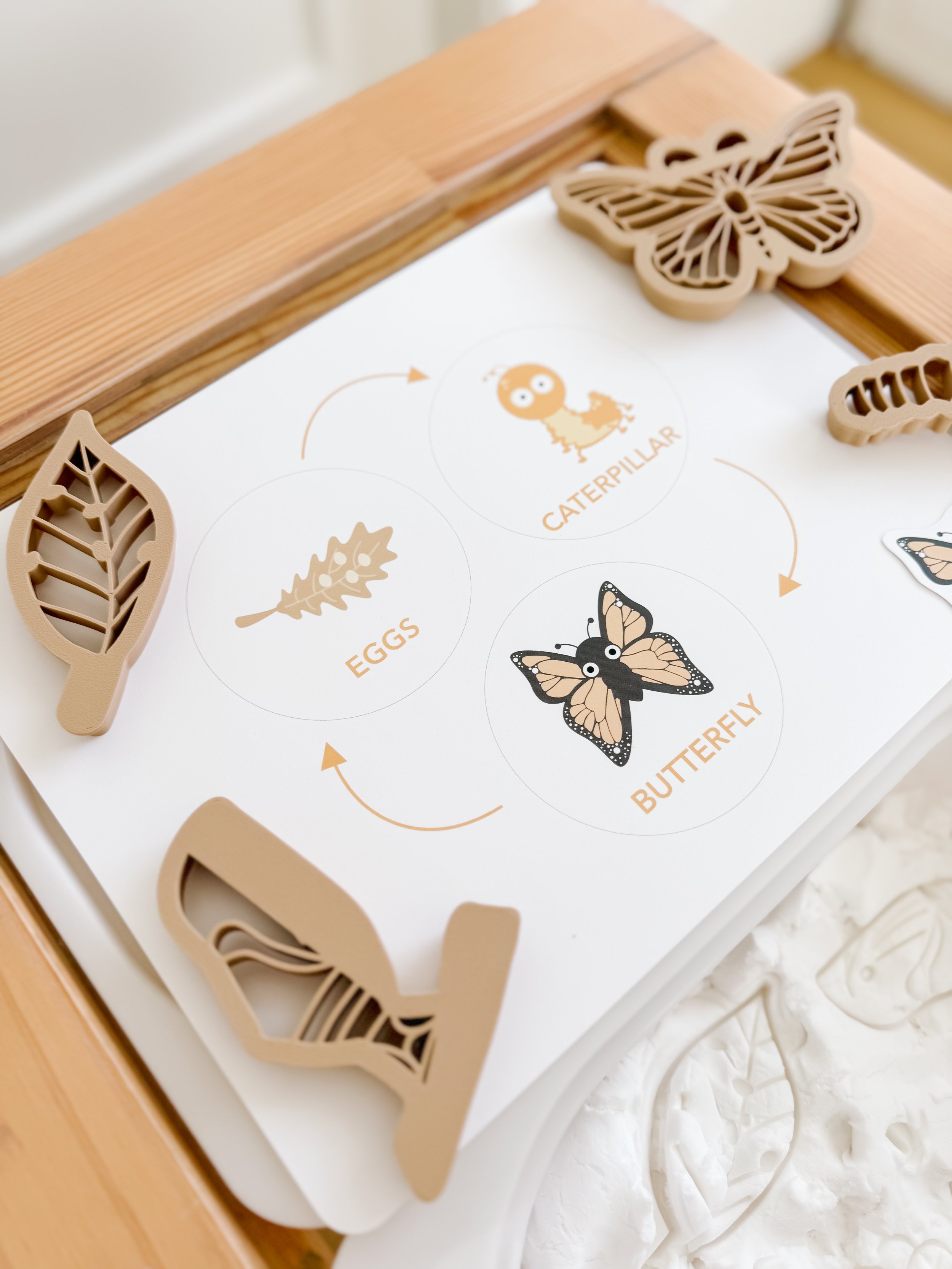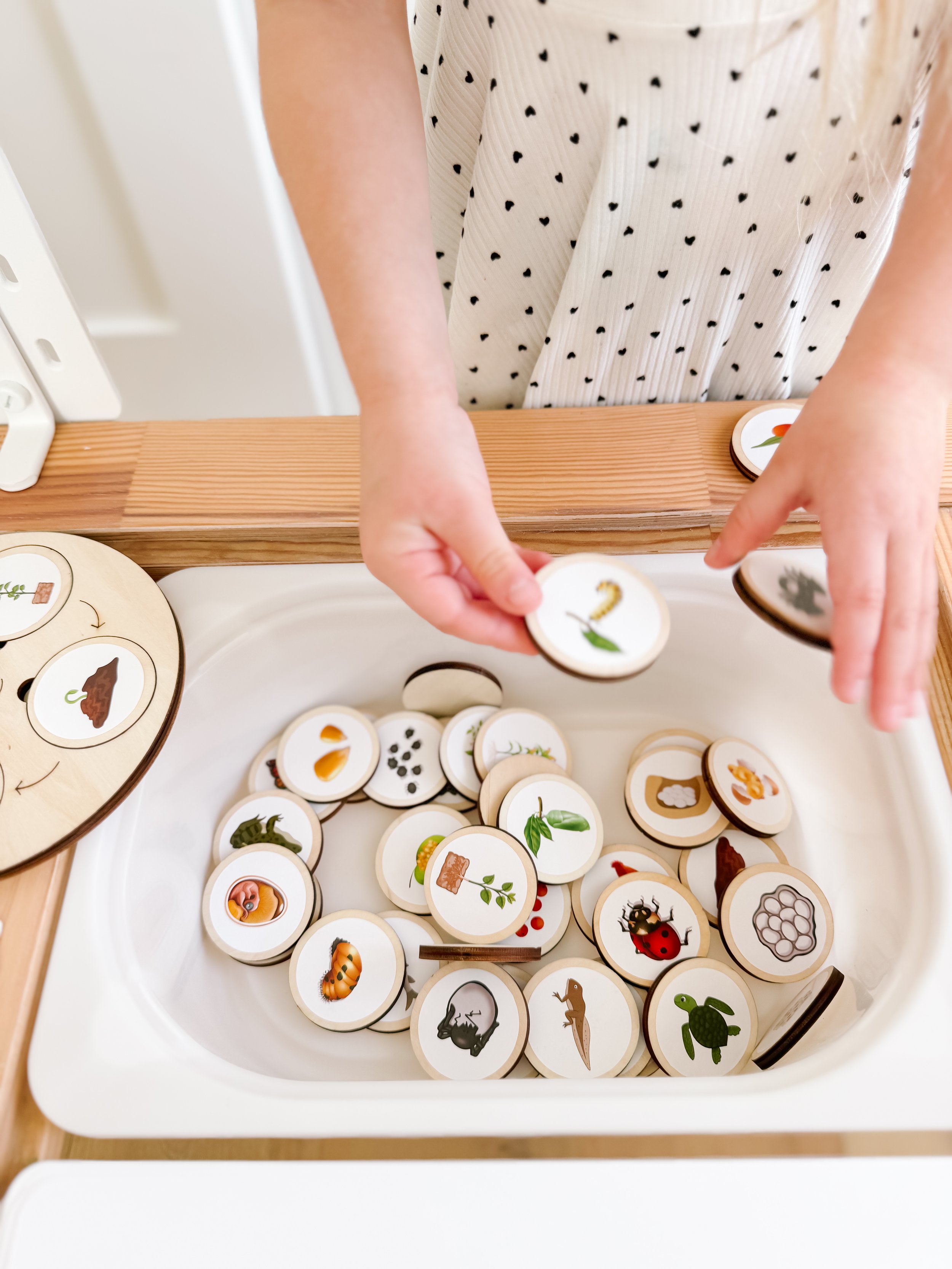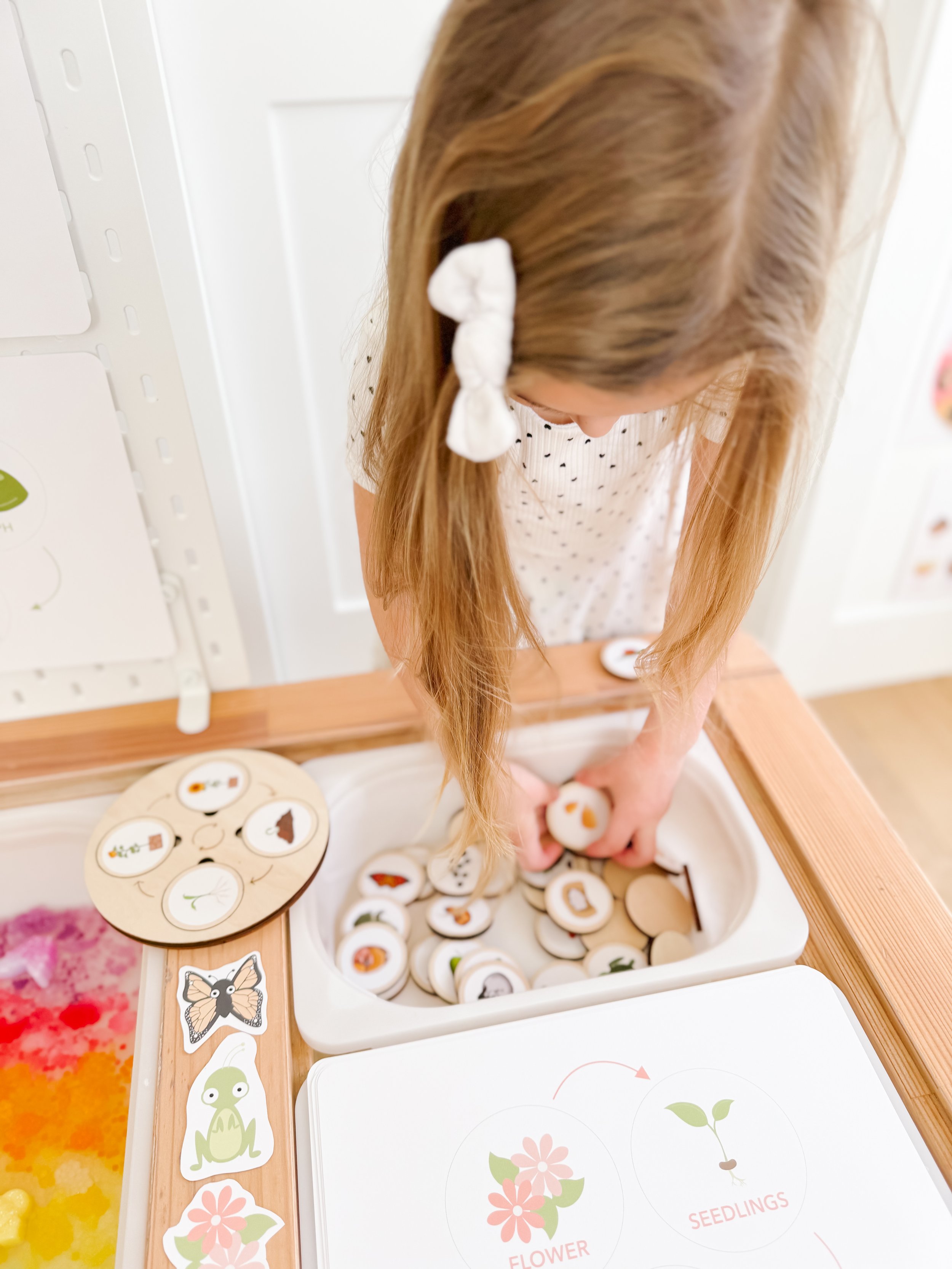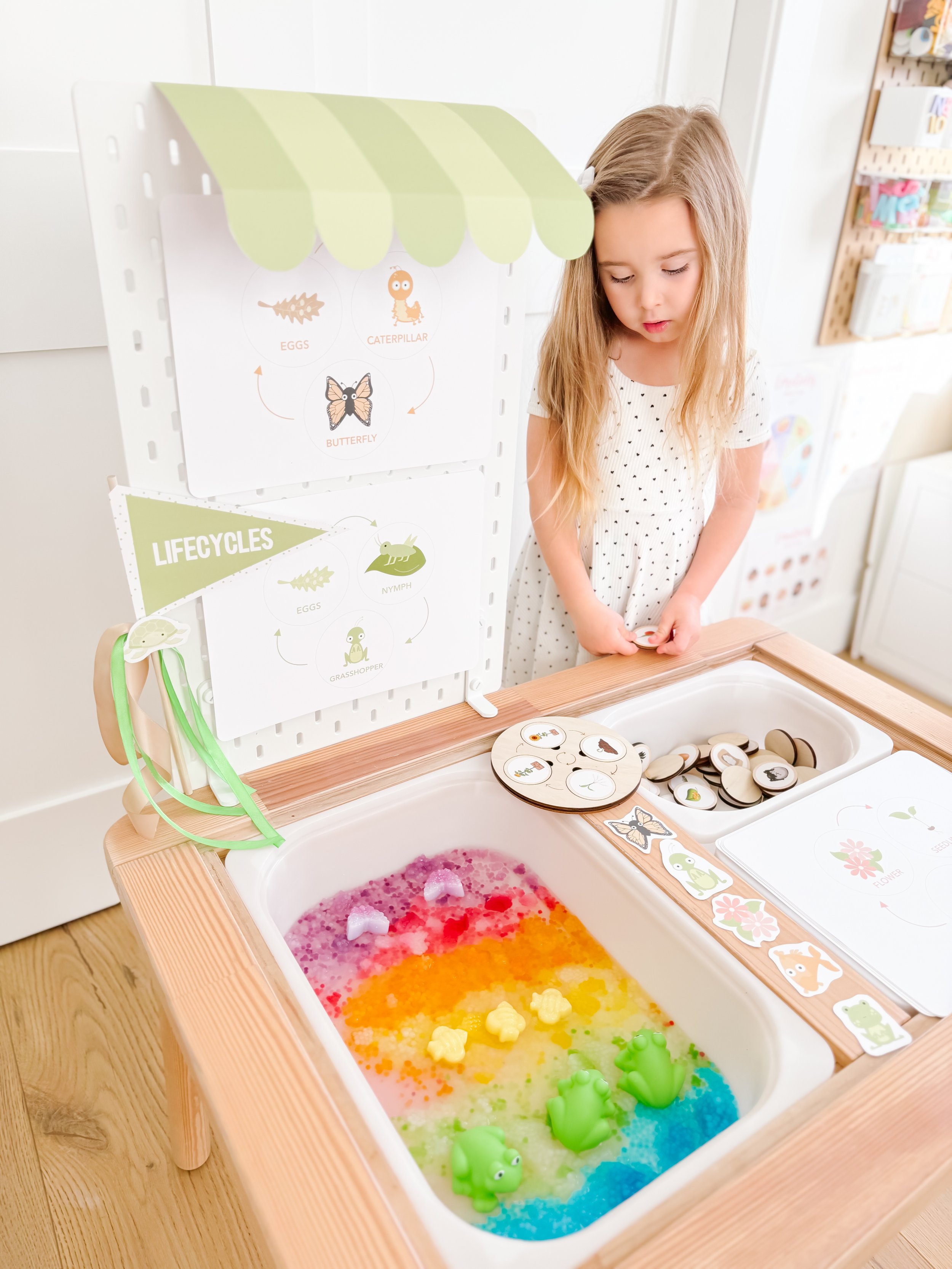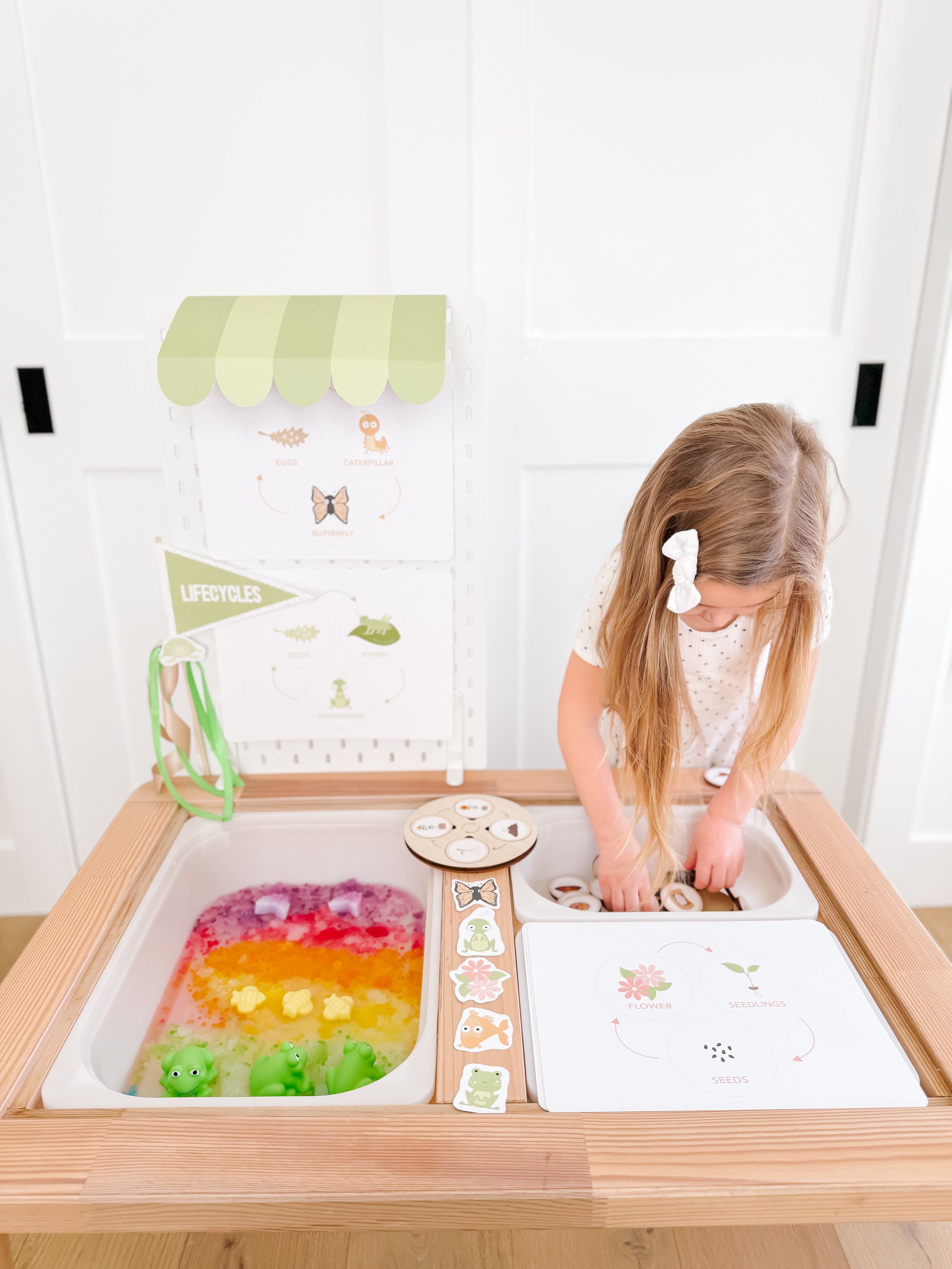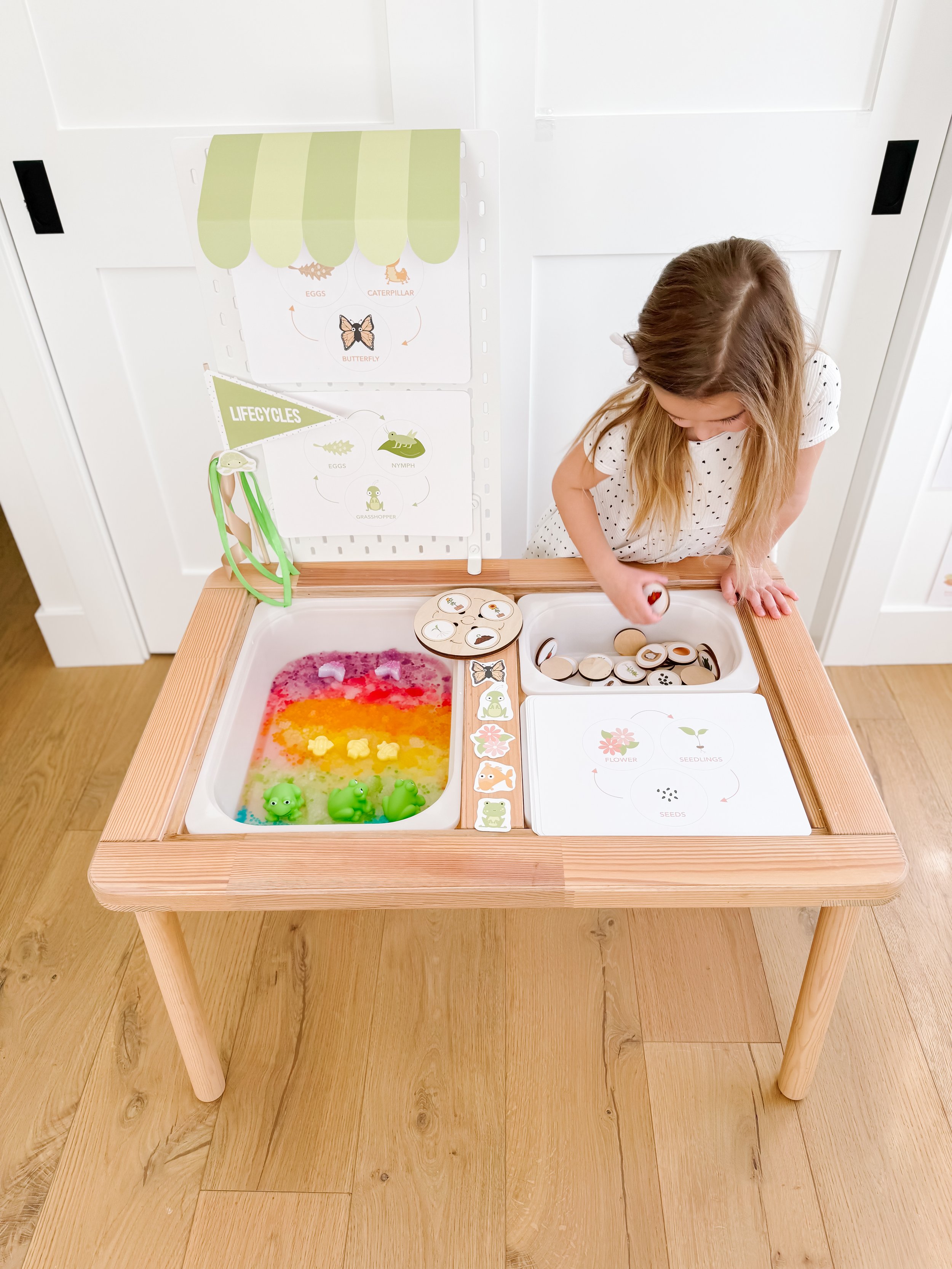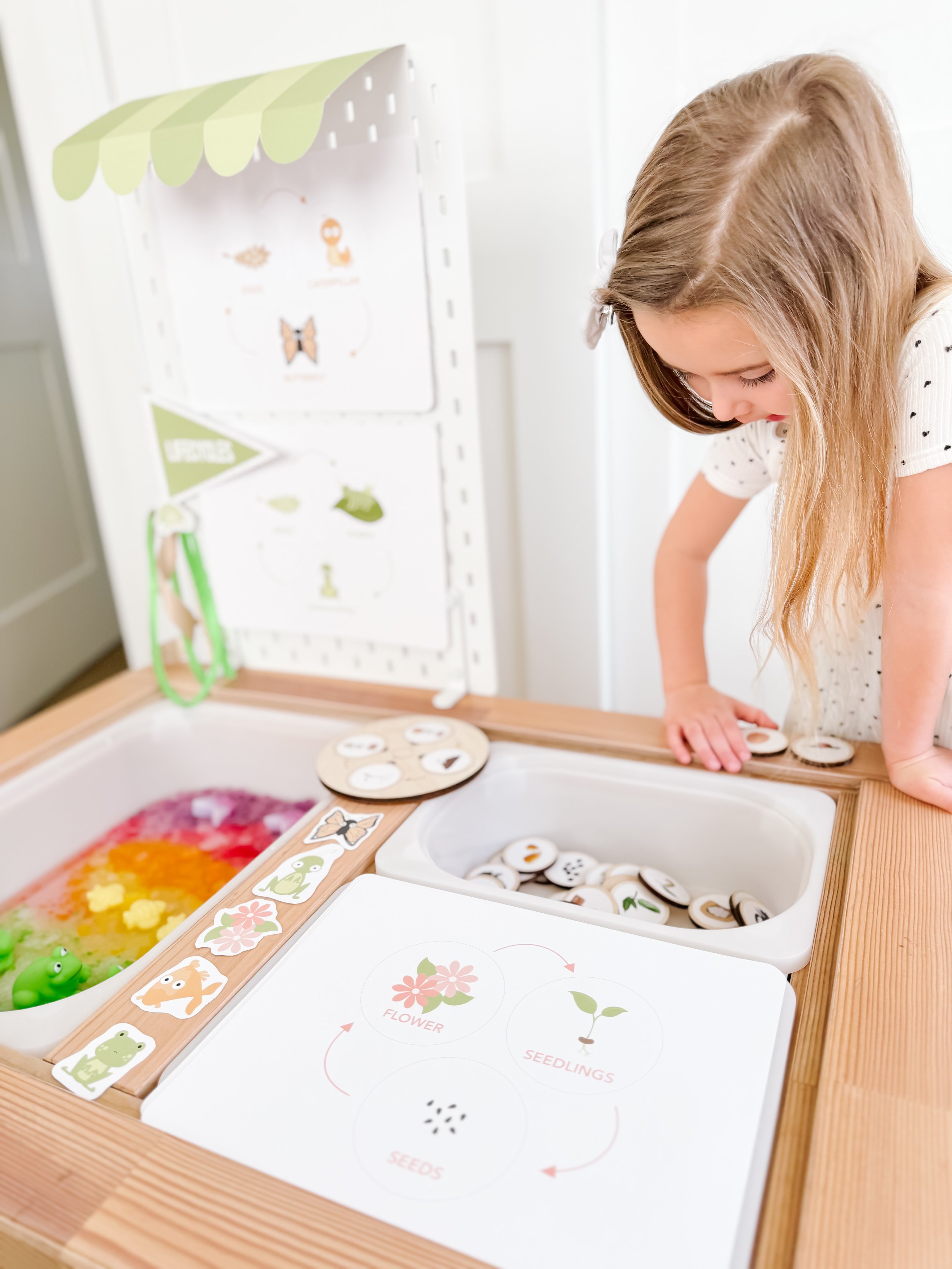Discover the Fascinating World of Lifecycles with Our Sensory Play Kit
Welcome to Goodnight Fox! Today, we are thrilled to present our newest addition to the sensory play family: the Lifecycles Sensory Play Kit. In this blog post, we will take a closer look at this exciting printable activity kit, the benefits of learning about lifecycles, and three fun sensory play activities that perfectly complement this learning module. Let's dive in!
Introducing the Lifecycles Sensory Play Kit
Our Lifecycles Sensory Play Kit is designed to engage young minds in a hands-on exploration of the fascinating world of lifecycles. Ideal for children aged 3 to 6, this kit comes with visual lifecycle charts of a chicken, frog, turtle, grasshopper, flower, fish, and butterfly. These bright and colorful charts bring each lifecycle to life, making learning a truly enjoyable experience.
The Benefits of Learning about Lifecycles
Understanding lifecycles is not only educational but also fosters a deeper appreciation for nature and the world around us. Here are a few benefits that make learning about lifecycles an enriching experience for young children:
1. Enhanced Scientific Knowledge: By studying lifecycles, children gain a basic understanding of how living things grow and change over time. This knowledge forms the foundation for future scientific learning.
2. Critical Thinking Skills: Exploring different lifecycles helps children develop essential critical thinking skills such as observation, comparison, and problem-solving. These skills contribute to their cognitive development and analytical abilities.
3. Connection with Nature: Learning about lifecycles allows children to develop a connection with the natural world. It fosters empathy, curiosity, and a sense of wonder, encouraging them to become responsible stewards of the environment.
Fun Sensory Play Activities for Lifecycles
Pairing sensory play with learning creates an immersive and engaging experience for children, maximizing their educational outcomes. Here are three fun sensory play activities that perfectly complement our Lifecycles Sensory Play Kit:
1. Sensory Bin: Pond Life Adventure
Fill a large container with water to create a mini pond.
Add sensory bin fillers such as blue dyed rice or water beads to represent the water.
Place toy frogs, turtles, and fish in the pond.
Encourage children to explore the lifecycles of frogs and turtles by creating imaginary scenarios in their pond habitat.
2. Sensory Bin: Butterfly Garden
Fill a shallow container with sensory materials like green shredded paper or sand to represent the garden.
Include flowers and butterflies from the lifecycle charts in the kit.
Let children use their imagination to play out the lifecycle of a butterfly, pretending to be caterpillars munching on leaves or fluttering around as colorful butterflies.
3. Sensory Bin: Chicken Adventure
Fill a sensory bin with dry corn kernels to represent the soil and nesting materials.
Place toy chickens and eggs in the bin.
Encourage children to explore the lifecycle of chickens by pretending to care for them, gather eggs, and build nests.
Remember, sensory play activities offer a unique sensory experience that enhances cognitive development, fine motor skills, and creativity.
Vocabulary Words for Ages 3-6 Module on Lifecycles:
Definition and Example Sentences:
1. Cycle - A series of events that repeat in a specific order. Example: "The butterfly goes through a lifecycle cycle from egg to adult."
2. Life - The state of being alive. Example: "All living things go through a process called life."
3. Growth - The process of getting bigger and developing physically or mentally. Example: "The plant goes through a gradual growth from a tiny seed to a big tree."
4. Change - To become different or undergo alteration. Example: "The caterpillar changes and becomes a butterfly."
5. Transformation - A complete or significant change in form or appearance. Example: "The tadpole's transformation into a frog is fascinating."
6. Develop - To grow or progress into a more advanced or mature state. Example: "The baby bird develops feathers and learns to fly."
7. Birth - The process of being born or coming into existence. Example: "The baby animal is born from its mother."
8. Hatch - To break open the shell from inside and come out. Example: "The baby chick hatches from the egg."
9. Larva - The earliest stage of an insect or amphibian with a distinct shape and different from its adult form. Example: "The caterpillar is the larva stage of a butterfly."
10. Pupa - The stage of an insect's lifecycle between the larva and adult forms. Example: "The caterpillar makes a cocoon and turns into a pupa."
11. Metamorphosis - A complete transformation or change in appearance. Example: "Butterflies and frogs go through a process called metamorphosis."
12. Egg - The round or oval object containing a developing baby animal. Example: "Birds lay eggs in nests."
13. Seed - A small, hard object from which a new plant grows. Example: "Plants produce seeds to grow into new plants."
14. Cocoon - A protective covering made by some insects during their pupa stage. Example: "Silkworms spin a cocoon around themselves."
15. Chrysalis - The hard case or shell in which a pupa turns into an adult insect. Example: "The chrysalis protects the developing butterfly inside it."
16. Sprout - To begin to grow into a plant from a seed. Example: "After planting the seeds, little sprouts started appearing."
17. Pollinate - The transfer of pollen from the male part of a flower to the female part, aiding in fertilization. Example: "Bees help in pollinating flowers while collecting nectar."
18. Migrate - To move from one place to another, usually due to seasonal changes. Example: "Birds migrate to warmer regions during winter."
19. Nectar - The sweet liquid found in flowers that attracts insects and birds. Example: "Butterflies drink nectar from flowers using their long tongues."
20. Habitat - The natural environment where an organism lives and finds what it needs to survive. Example: "Fish live in water, as it is their natural habitat."
21. Predator - An animal that hunts and feeds on other animals. Example: "The lion is a fierce predator and hunts its prey."
22. Prey - An animal that is hunted and eaten by other animals. Example: "The rabbit is a prey animal for the fox."
23. Crawl - To move forward on hands and knees or with the body close to the ground. Example: "The baby turtle crawls towards the sea after hatching."
24. Fly - To move through the air with wings. Example: "Birds and insects such as butterflies can fly."
25. Adulthood - The stage of life when an organism is fully grown and mature. Example: "After going through its lifecycle, the frog reaches adulthood."
In Conclusion
The Lifecycles Sensory Play Kit is a fantastic educational tool that combines learning with fun-filled sensory play activities. By understanding lifecycles, children expand their scientific knowledge, develop critical thinking skills, and connect with the natural world around them. Take your child on an exciting journey through various lifecycles with our sensory bin activities. Watch as they grow and learn while engaging all their senses. Happy exploring!
